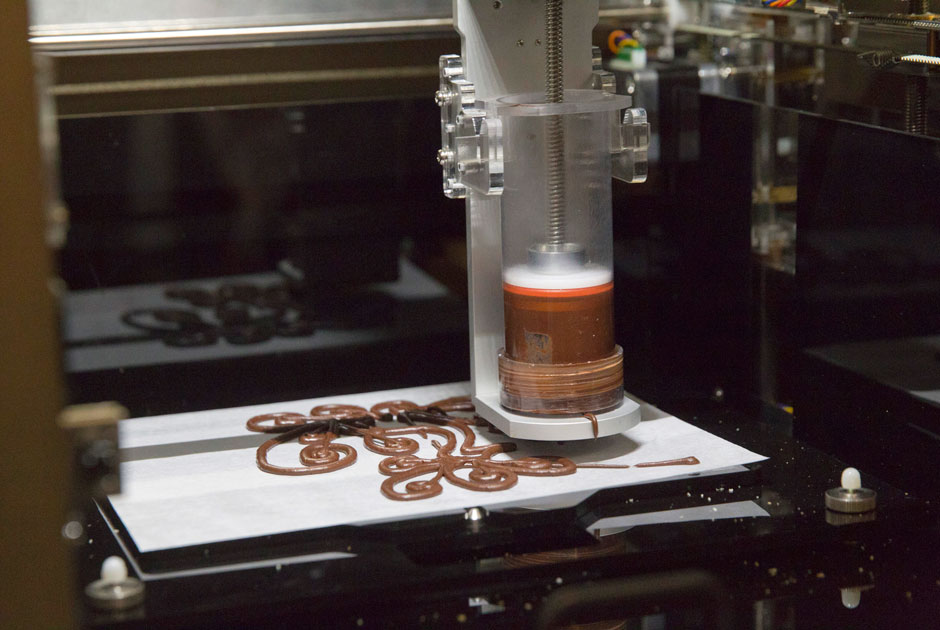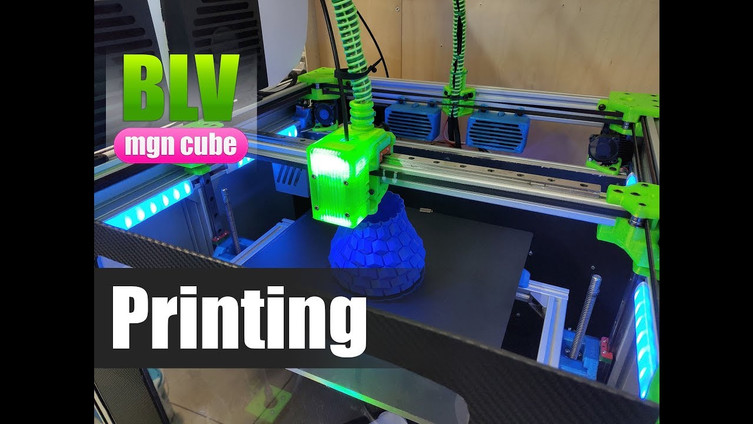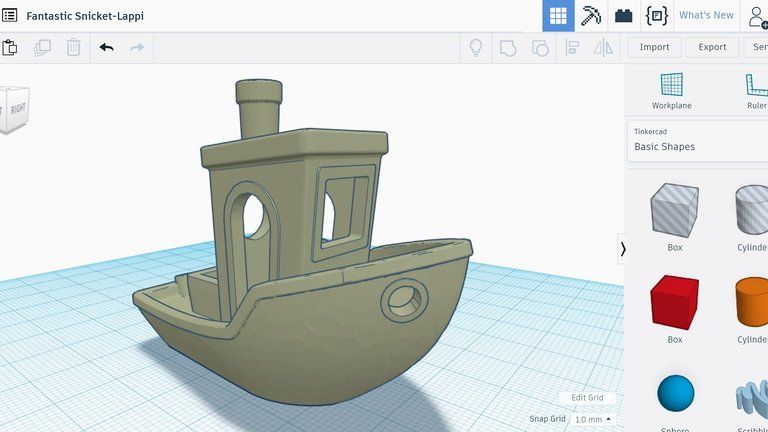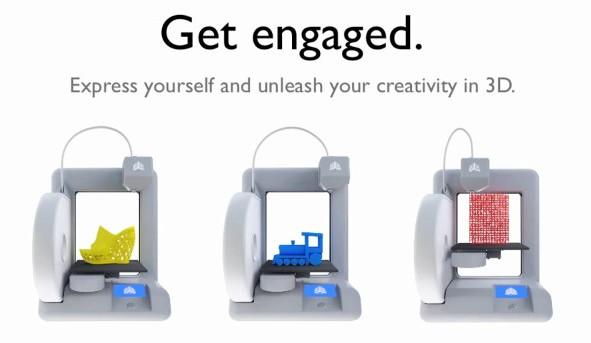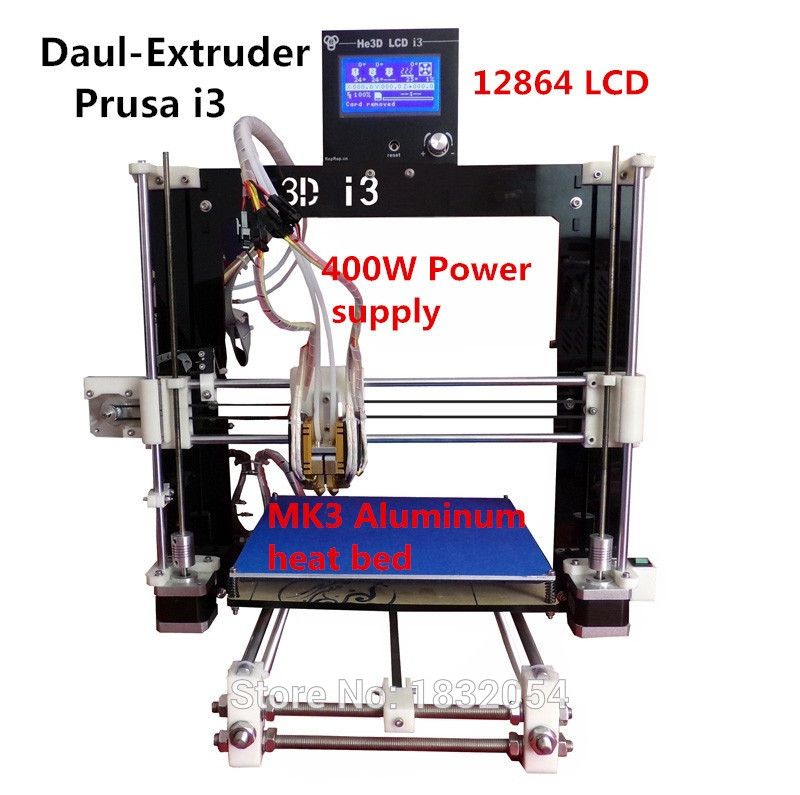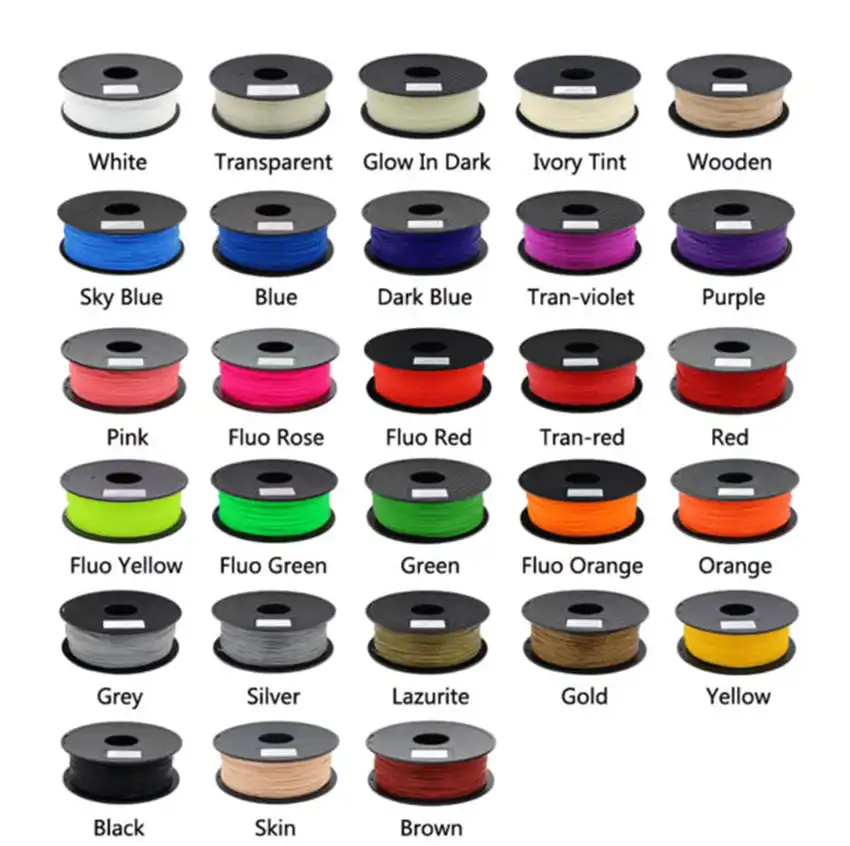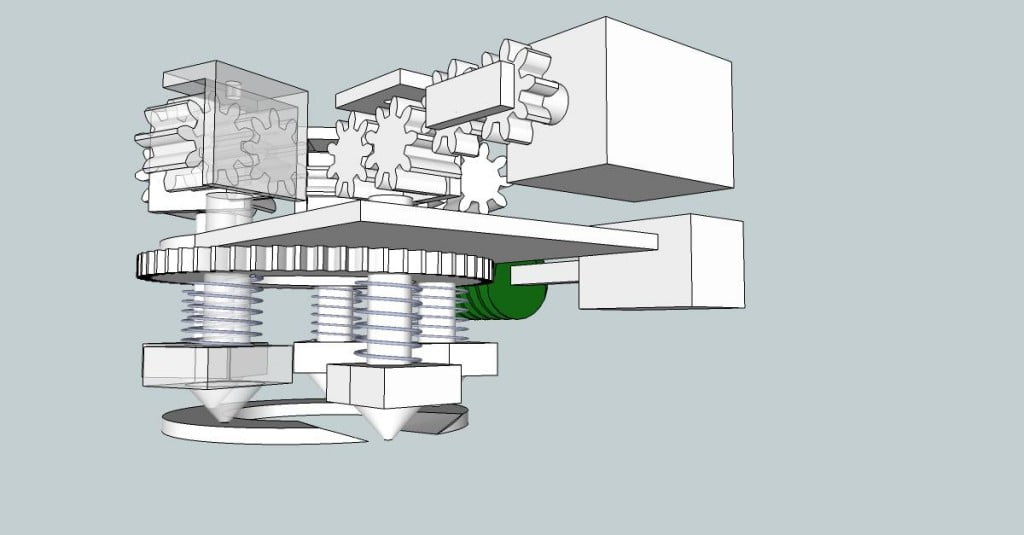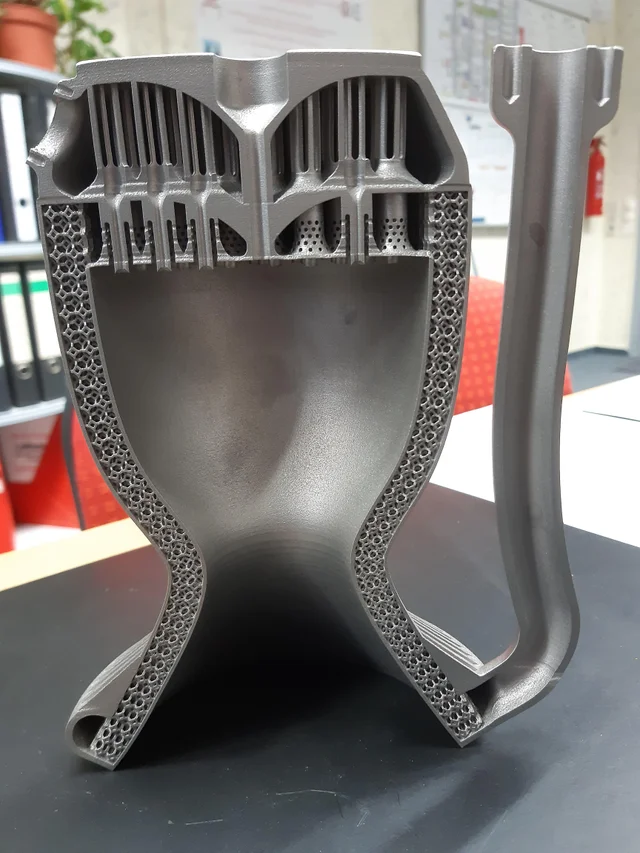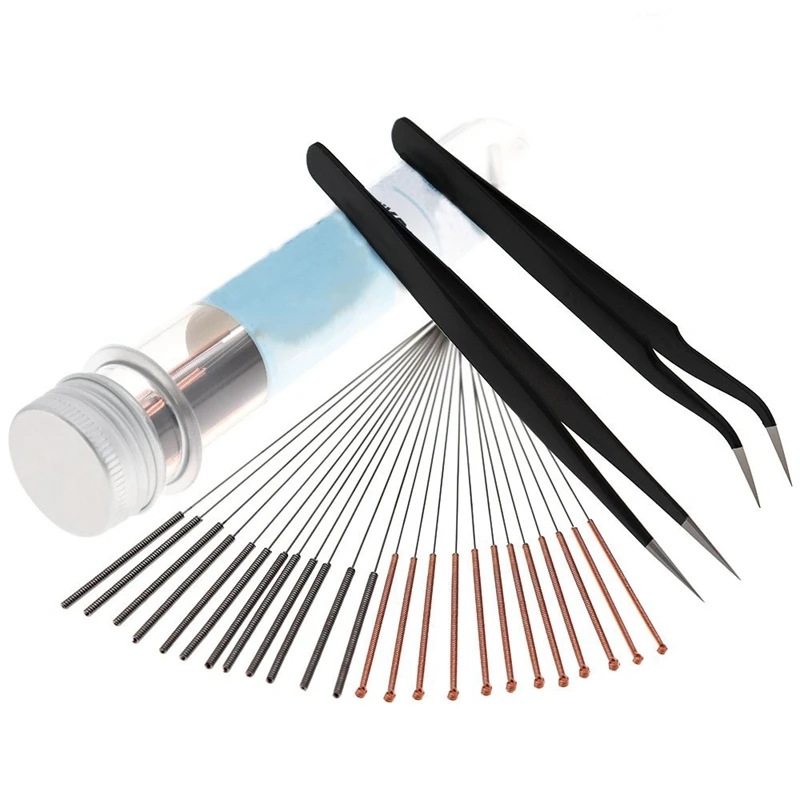3D printing ces 2023
CES 2023: every major 3D printing update from this year's consumer technology showcase
As its name might suggest, the Consumer Electronics Show or ‘CES’ is a tradeshow dedicated to highlighting the latest advances in mainstream consumer technologies.
Over the years, the exhibition has become a staple in the diaries of those seeking updates on cutting-edge consumables ranging from TVs and smartwatches, to downright zany innovations such as flying cars and talking pets.
Given the expo’s mass-market appeal, it’s also used by some 3D printing firms as a channel through which they can address a much wider audience than their traditional industry clientele. In the past, this has seen the likes of Anycubic, Aectual, and Exos showcase systems, services and custom medical devices, respectively, in a way that helped bring them to mainstream media attention.
This year’s show was no different, with stalwarts like Formlabs alongside big names outside the industry such as Peugeot and Neutrogena. Additionally, CES 2023 saw KOKONI, Handddle, HyperX, and more, launching new 3D printed products. Read on for the latest from the show floor.
Formlabs launches Automation Ecosystem
One of the standout launches from a 3D printing perspective was Formlabs’ introduction of a productivity-focused Automation Ecosystem. Composed of three new products: the firm’s Form Auto and High Volume Resin hardware packages, as well as a Fleet Control software, the new platform is said to help users drive greater 3D printing utilization.
While the former includes a five-liter resin bag and pump package that allows users to minimize material handling, the latter are comprised of hardware and software offerings which facilitate seamless print preparation and part removal.
At launch, Formlabs CPO Dávid Lakatos said: “The Formlabs Automation Ecosystem is a seamless solution for ramping up production with 3D printer fleets, staying true to the ease of use of all Formlabs products. Formlabs users recently achieved a major milestone, with more than 100 million parts printed on our 3D printers, and by adding this ecosystem, Formlabs is increasing the capacity so users can deliver further 3D printing innovation.”
Formlabs users recently achieved a major milestone, with more than 100 million parts printed on our 3D printers, and by adding this ecosystem, Formlabs is increasing the capacity so users can deliver further 3D printing innovation.”
Neutrogena dabbles in 3D printing (again)
On the skincare front, Neutrogena also unveiled its latest application of the technology: personalized 3D printed skin health supplements. Using the firm’s new ‘Skin360 SkinStacks’ service, customers are now able to complete a facial self-scan to identify areas of improvement for their skincare routine, before ordering gummies designed to meet their specific needs.
Each of these orders is then fulfilled by Nourished, a specialist in 3D printing supplements made up of individual nutrient layers. Previously traded under the brands Magic Candy Factory and Vitamyne, the company has a background in producing sugary treats and helping develop FabRX-3D printed personalized medicines.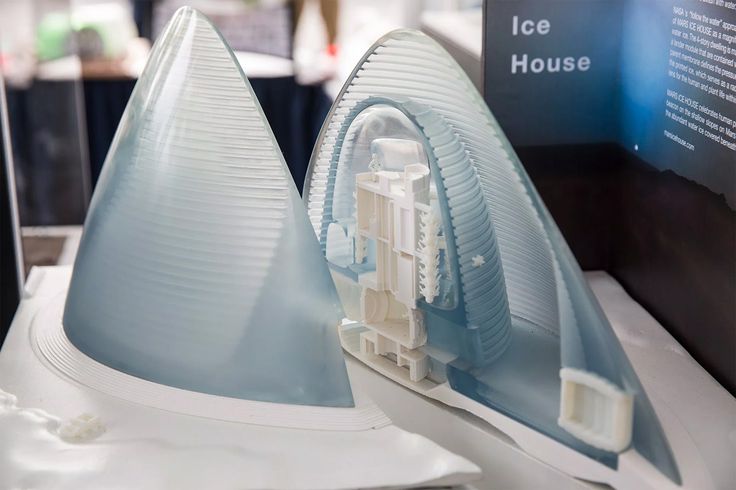 In the past, the firm has also worked with big consumer brands like Colgate to market its gummies, and it has now struck a deal with a similar mass-market appeal in the form of a partnership with Neutrogena.
In the past, the firm has also worked with big consumer brands like Colgate to market its gummies, and it has now struck a deal with a similar mass-market appeal in the form of a partnership with Neutrogena.
“We are grounded in the belief that beauty begins with healthy skin and are proud of a heritage that consistently delivers skincare solutions built at the intersection of science and technology,” said Roberto Khoury, SVP of Neutrogena. “Working with Nourished allows us to further that commitment by marrying our award-winning digital skin assessment with Nourished 3D printing to create on-demand dietary supplements [which] help consumers meet their personal skincare goals.”
KOKONI SOTA systems on display at CES 2023. Photo via KOKONI.Launches at KOKINI, Handddle and Lynxter
At CES 2023, Chinese 3D printer manufacturer KOKONI took the opportunity to launch its AI-led SOTA system. Interestingly, the machine features an ‘upside-down’ design that’s said to deliver a print speed of up to 600mm/s while offering users “exceptional stability with close-to-zero vibration. ” The system is also quiet, emitting 30 decibels of noise during operation, and packs a custom high-speed stepper motor and close-loop motor system, that provide smooth, reliable performance.
” The system is also quiet, emitting 30 decibels of noise during operation, and packs a custom high-speed stepper motor and close-loop motor system, that provide smooth, reliable performance.
One of the more innovative aspects of the KOKONI SOTA is the machine’s AI-powered real-time monitoring and error detection systems. According to the company, the unit’s ‘AI-intelligent camera’ allows it to cover everything from spaghetti and breakage detection to material usage levels, and alert users when any changes need making.
“The KOKONI SOTA is revolutionizing the 3D printing industry, with its advanced AI technology that allows for real-time monitoring and error detection,” the firm said in a statement. “Its AI-intelligent camera and micron-level optical radar monitor the printing process for errors in real-time and can alert users. KOKONI SOTA brings the power of AI to the printing process, and takes creations to new heights.”
Other esteemed 3D printer manufacturers exhibiting at the show included Handddle, which introduced an Industrial Internet of Things (IoT) platform designed to help scale 3D printing to industrial levels, as well as Lynxter. The latter showcased the Lynxter S300X it launched last year, a system capable of 3D printing silicones and polyurethanes into dampers, seals, orthoses, and functionalized textiles.
The latter showcased the Lynxter S300X it launched last year, a system capable of 3D printing silicones and polyurethanes into dampers, seals, orthoses, and functionalized textiles.
Peugeot presents new EV concept
Away from 3D printing system launches, French automotive multinational Peugeot debuted its additive manufacturing-enabled ‘Inception’ concept. At the center of this design concept is a next-gen ‘i-Cockpit,’ complete with a 3D printed rim-equipped ‘Hypersquare’ electronic control system, which can be retracted to make room for a panoramic passenger screen.
In practice, the vehicle is designed to be powered by two 800V electric motors that charge a 100kWh battery, giving it an 800-kilometer range. Though the Innovation concept itself isn’t expected to enter end-production, many of its features are set to inform the designs of Peugeot’s electric cars from 2025 onwards.
“Peugeot is committed to the electrification of its range,” explained Peugeot Brand CEO Linda Jackson. “In 2023, 100% of the vehicles in the range will be electrified and in the next two years, five new 100% electric models will be launched. Our ambition is simple: to make Peugeot the leading electric brand in Europe by 2030. This objective and ambitious vision pave the way for a radical transformation for the brand.”
“In 2023, 100% of the vehicles in the range will be electrified and in the next two years, five new 100% electric models will be launched. Our ambition is simple: to make Peugeot the leading electric brand in Europe by 2030. This objective and ambitious vision pave the way for a radical transformation for the brand.”
Embracing AM in gaming and robotics
In gaming developments, HP division HyperX introduced its very own custom 3D printed keycap range. As part of its CES exhibition, the firm showcased a variety of personalized ‘HX3D’ keyboards, headsets, mice, and other gaming peripherals. Manufactured from an eco-friendly nylon, the first keycap unveiled at the show was a unique HyperX Cozy Cat design, voted for by the gaming community.
Over the months ahead, this peripheral upgrade is set to be followed by several others for both HyperX and most other mechanical keyboards, which allow gamers to customize their favorite gear using HP’s proprietary 3D printing technology.
“We know gamers love customization, spending a lot of time and effort to update all kinds of in-game items, from characters to skins to weapons and beyond,” said Daniel Kelley, Global Gead of Marketing at HyperX. “HX3D is taking this love of personalizing a gaming experience to the physical world and enabling a wide range of fun ways to update and customize our award-winning HyperX gear.”
South Korean start-up Supernova, meanwhile, chose to showcase the capabilities of its HUENIT robotic arm at CES 2023. Thanks to its built-in camera, RISK-V-based processors and AI accelerators, the device is capable of identifying people and objects in real-time. This, in tandem with the arm’s Bluetooth functionality, potentially allows users to deploy it wirelessly within IoT applications.
According to the company, the modular system is capable of rotating 220 degrees and lifting up to 26.5 ounces of weight, and can either be fitted with tools, including a high-power laser engraver and 3D printer, or utensils for carrying out household chores.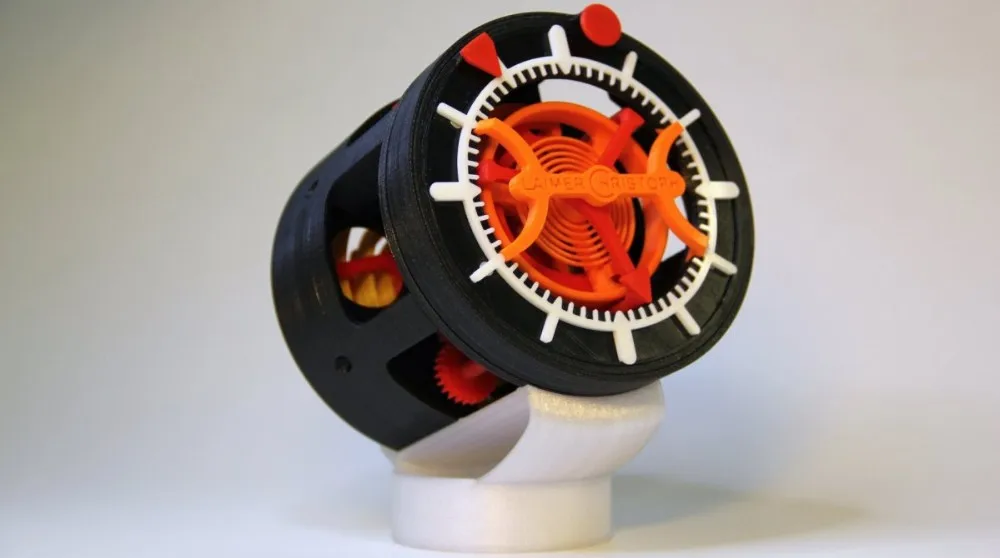 With its new product, which has already netted it a CES 2023 Innovation Award, Supernova is also said to be targeting educational use cases.
With its new product, which has already netted it a CES 2023 Innovation Award, Supernova is also said to be targeting educational use cases.
To stay up to date with the latest 3D printing news, don’t forget to subscribe to the 3D Printing Industry newsletter or follow us on Twitter or liking our page on Facebook.
While you’re here, why not subscribe to our Youtube channel? featuring discussion, debriefs, video shorts and webinar replays.
Are you looking for a job in the additive manufacturing industry? Visit 3D Printing Jobs for a selection of roles in the industry.
Featured image shows the CES Convention Center in Las Vegas. Photo via Lynxter.
What Happened to the Huge 3D Printer Presence at CES? « Fabbaloo
Who’s going to CES 2023? We’re not.
CES 2023 is about to start, and the gigantic annual tech event used to be THE place to announce new 3D printers and related products, but it isn’t that way any more.
The story of why this happened is quite interesting, and is a piece of 3D print history.
It all began with the expiry of Stratasys’ FDM patents in 2008, which opened the door for others to use the same process in less expensive designs. One of the many entrants at the time was MakerBot, led by then-CEO Bre Pettis.
Pettis was quite the marketer, as he devised a brilliant strategy to promote his company’s new product, the Replicator desktop 3D printer. Coming from a makerspace / open source background, Pettis and crew positioned their device as a personal 3D printer, one that any consumer might want to use.
There were other reasons for this strategy: the Replicator was utterly unfit for use in professional or production environments, and those markets were not open to them. But hobbyists, DIY folks and general consumers might be.
The campaign began with demonstrations of using the Replicator to produce household items, which was quite successful in the DIY space.
But what better place to gain publicity for a consumer machine than at the annual Consumer Electronics Show, a.k.a. CES? MakerBot set up what was likely the only 3D printer stand at CES in 2010. Being the only entrant in a new and increasing (at the time) interesting new technology, MakerBot garnered considerable interest from the ocean of tech media at the event. It was a huge success.
MakerBot’s Bre Pettis launching the Replicator 2X at CES 2013 [Source: Fabbaloo]MakerBot returned to CES in the following years and even launched new machines at the show. I was even present at one of these announcements, where the Replicator 2X was launched.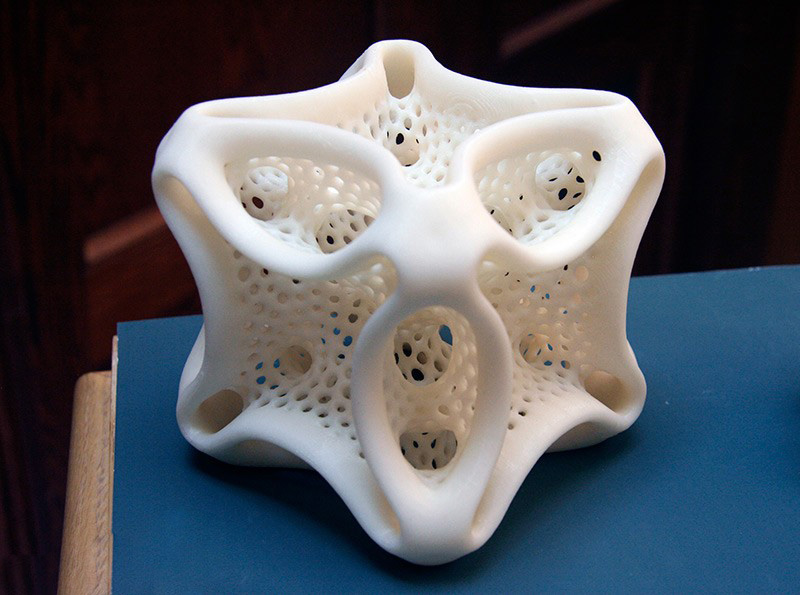
Because of MakerBot’s success, many other 3D printers companies of the day also showed up at succeeding CES events. At one point I believe there might have been around 150 3D printer-related exhibitors at CES, creating their own tech zone in the “innovations” hall along with other amazing new tech like wearables, etc.
Even companies that had nothing to do with consumer 3D printing showed up, like Stratasys. My thinking at the time was that Stratasys was trying to keep up with 3D Systems, which was then trying to launch a line of consumer 3D printing equipment and services.
But that was a bit strange, because the attendees of CES are not makers, architects, designers and production folks; they are actually buyers for electronics. A typical attendee would be the product manager for an electronics store, looking for the latest cameras and TVs to order next year.
Eventually, after MakerBot was acquired by Stratasys, their presence at CES stopped. This made complete sense, as most 3D printer companies then were desperately switching gears to focus on professional applications because the consumer market crashed and burned.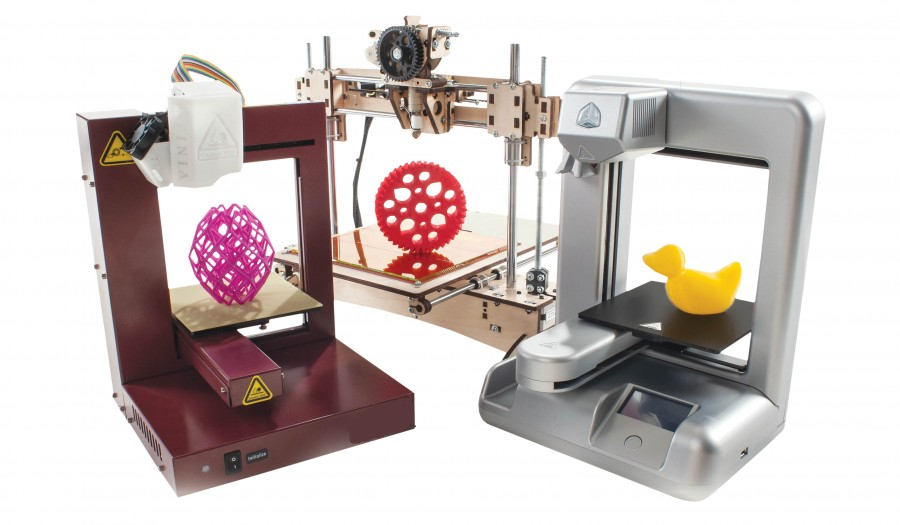
With the withdrawal of MakerBot, many other 3D printer manufacturers also realized CES was not the right place to market their products. The number of 3D printer companies at the event dropped significantly, and the final CES our team attended had only around twenty exhibitors. Many of them were first-time Asian companies that did not realize what they were getting into.
Since then the number of 3D print exhibitors at CES has remained low, and as such we’re not looking to attend the event. That said, there are still companies that go to CES.
I took a look at the CES 2023 exhibitor list to see if the pattern still holds, and it seems to be so. Here’s the relevant exhibitors I found
3D Music (3D printed guitars)
AddOptics (3D print service for optical elements)
Handddle (Machine learning monitoring of AM equipment)
JER Education (3D Pen manufacturer and associated items)
Kyungil University (Food 3D printer)
Lynxter (Professional-level multi-material 3D printer)
Neutrogena (3D printed dietary skin health supplements)
Shenzhen Hotack (DLP 3D Printer)
Revopoint (3D scanning system)
SavorEat (Robot chef using 3D printing tech)
Snapmaker (Multi-tool 3D printer)
Spero3D (desktop 3D printer upgrades and accessories)
And that’s about it.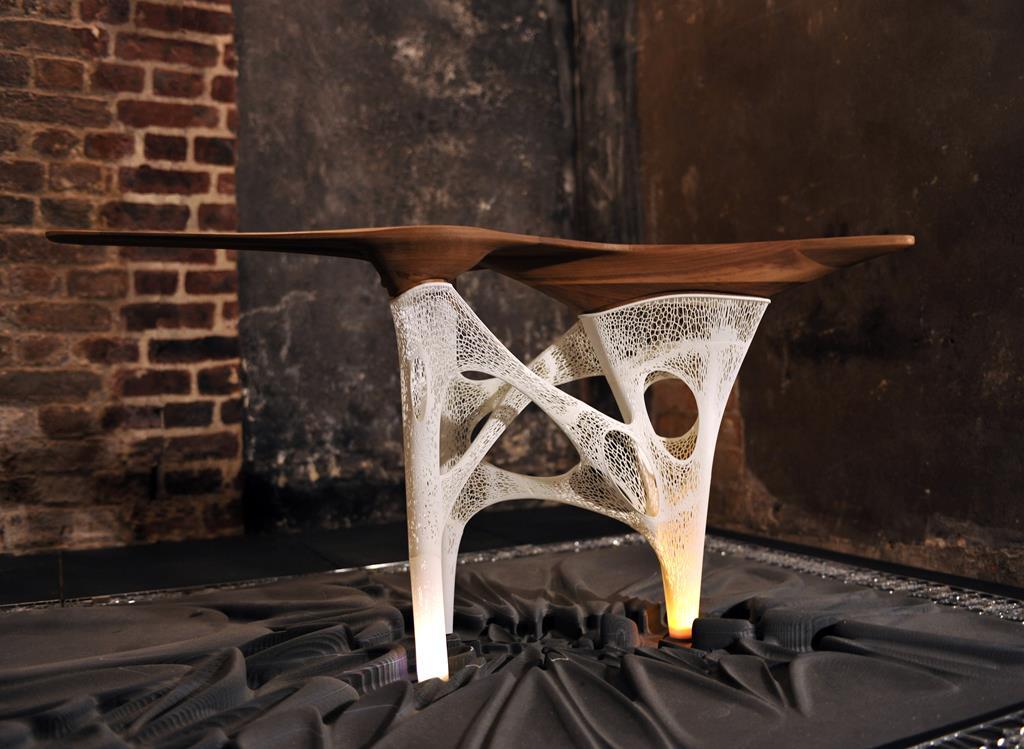 There are a few more that have registered under the “3D print” tag, but they are services that happen to involve 3D printing and really focus on their end product.
There are a few more that have registered under the “3D print” tag, but they are services that happen to involve 3D printing and really focus on their end product.
[UPDATE] Formlabs contacted us to say that they are indeed attending, but for some unexplainable technical reason, the company does not appear on the CES exhibitor directory for “3D printing”. They say they are able to make sales at the event, as they have a number of customers that attend.
If you’re looking for 3D print innovations and announcements, CES 2023 is probably not the best place to go, especially considering the skyrocketing cost to attend the event.
Via CES
Samsung Stretch Display, Eyebrow Printer, and Anti-Snoring Cushion: CES 2023's 15 Weirdest Gadgets
Gadgets
In early January, Las Vegas hosted one of the largest electronics exhibitions, the International Consumer Electronics Show, or CES-2023 for short. For the first time in two years, the technology forum was held live - journalists and ordinary users were able not only to see, but also to test some of the new products. We talk about the 15 most interesting, in our opinion, premieres - from a special pillow against snoring to the "most powerful gaming processor" in the world.
We talk about the 15 most interesting, in our opinion, premieres - from a special pillow against snoring to the "most powerful gaming processor" in the world.
Stretchy Screens from Samsung
One of the most striking premieres of this CES-2023 is the new stretchy displays from Samsung. One of them was called the Flex Hybrid, and it can not only be folded (this is not news for the devices of the South Korean giant for a long time), but also twisted and even pushed apart. So, when unfolded, the novelty has a diagonal of 10.5 inches, and when folded - only 4.2. This will allow the manufacturer to "play" with the size of gadgets in a completely new way.
The company also demonstrated two more screens - Samsung Flex Slideable Solo and Duet.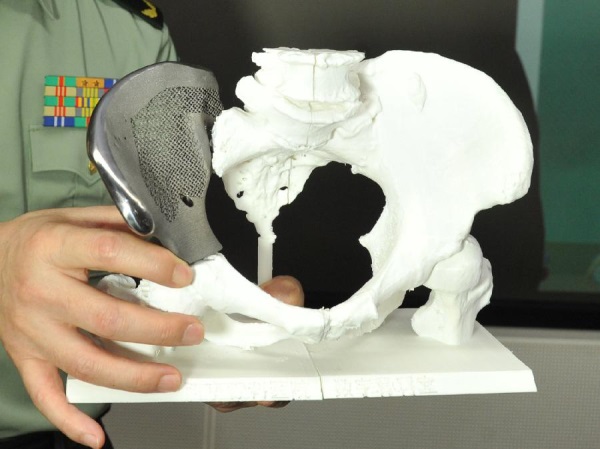 Their diagonals can stretch from 14 to 17 inches. The only difference is that the Solo model moves apart in one direction, and Duet - in two at once. However, it is not yet clear whether the presented developments will form the basis of any particular serial product.
Their diagonals can stretch from 14 to 17 inches. The only difference is that the Solo model moves apart in one direction, and Duet - in two at once. However, it is not yet clear whether the presented developments will form the basis of any particular serial product.
Acer Desk Exercise Bike
Taiwanese company Acer has introduced a product for those who are trying to combine sedentary work and a healthy lifestyle. They created an exercise bike that integrates... a desk. The user will be able to train and at the same time continue to work.
However, this is not the end. The trainer, dubbed the eKinekt BD 3, will convert kinetic energy from pedaling into electricity to charge gadgets. So, an hour of classes at a rotation speed of 60 revolutions per minute will allow you to charge your laptop. In this case, the device will have two USB-A ports and one USB-C, so that three gadgets can be charged at the same time. The eKinekt BD 3 is expected to go on sale this summer for $999.
In this case, the device will have two USB-A ports and one USB-C, so that three gadgets can be charged at the same time. The eKinekt BD 3 is expected to go on sale this summer for $999.
One of the most secure smartphones from Lenovo
Another novelty presented at CES-2023 is the ThinkPhone smartphone based on technologies from Lenovo and Motorola. The device is positioned as a gadget for owners of ThinkPad laptops and is intended more for the corporate sector.
The main advantage of a smartphone is security. Buyers will have access to the ThinkShield security platform. In addition, ThinkPhone is equipped with a separate processor, which is responsible for the safety of passwords, pin codes, cryptographic keys. All this information will be stored in a special environment protected from unauthorized access.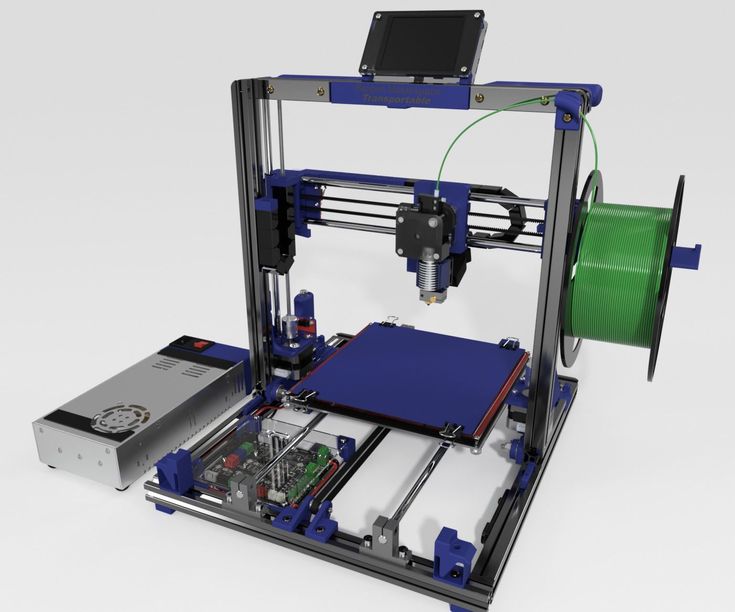 In addition, the device boasts a Snapdragon 8+ Gen 1 processor, 8 GB of RAM and three cameras, including one ultra wide-angle.
In addition, the device boasts a Snapdragon 8+ Gen 1 processor, 8 GB of RAM and three cameras, including one ultra wide-angle.
"Transparent" refrigerator from LG
The Korean giant presented its innovative MoodUP refrigerator at the exhibition, the body of which is equipped with light panels that can change color at the request of the owner. This process can, in particular, be synchronized with music.
But the most useful innovation is the "transparent" mode of the color panels. The image from the internal camera is displayed on the body. It turns out that the user will be able to find out what is inside the refrigerator without even opening the door.
BMW chameleon electric car
Not only refrigerators, but also cars can boast of the ability to change color. So, the German concern BMW presented the concept car i Vision Dee. Its body is finished with a special ePaper film with E Ink electronic ink technology. As a result, each of the 240 body panels can be "repainted" in one of 32 colors, creating an individual unique design.
All vehicle windows are screens that can display important information regarding the operation of an electric vehicle. However, all this is just an opportunity to demonstrate the technologies of the German auto giant - the car has no real serial prospects.
Asus' new glasses-free 3D system
In turn, Asus introduced the world's first 3D technology for laptops that does not require special glasses to view 3D images.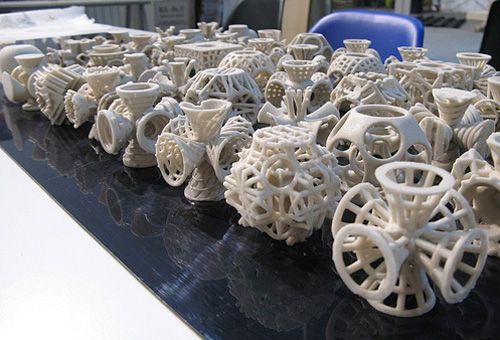 The system was called Spatial Vision.
The system was called Spatial Vision.
Special lenses and eye tracking system make it possible to see a three-dimensional image without special glasses. Thanks to them, the laptop screen forms a slightly different image for the user's right and left eyes. The good news is that this technology will likely be available to users of the company's new computers.
Unistellar Smart Telescope
The French company Unistellar has unveiled the second version of its Equinox 2 Smart Telescope in Las Vegas. It does not have the usual eyepiece - it is proposed to aim at stellar objects of interest using a smartphone.
The telescope itself, without a camera, can photograph stellar objects, while the shutter speed allows you to overlay images one on top of the other, removing noise and interference, making the picture clearer.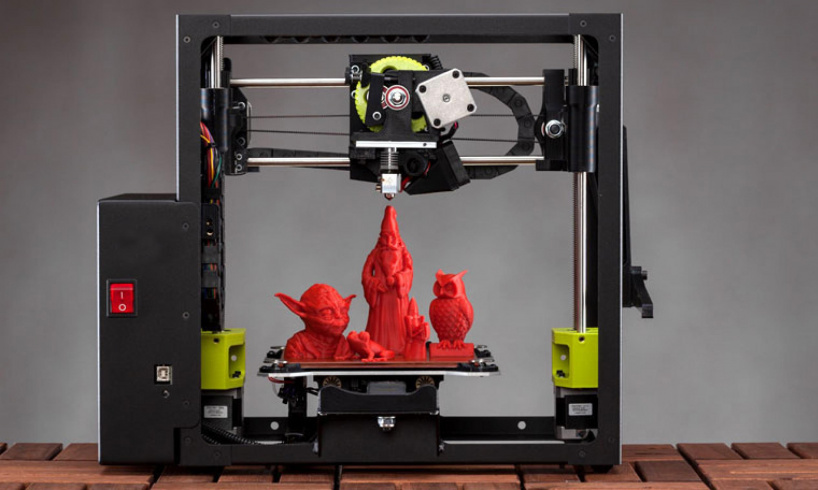 The device has a built-in memory of 64 GB and costs $2.5 thousand.
The device has a built-in memory of 64 GB and costs $2.5 thousand.
Eyebrow printer from L'Oreal
The novelty allows you to apply the ideal shape and thickness of the eyebrow pattern with a resolution of 1200 dpi. At the same time, if something went wrong, the applied pigment can be easily wiped off with a makeup remover.
The device should go on sale this year, but its price has not yet been disclosed.
AMD super processors
7950X3D, Ryzen 9 7900X3D and Ryzen 7 7800X3D. They outperform their predecessors in almost every way. So, Ryzen 7 7800X3D is 21% faster than the previous 5800X3D model. And this applies only to cases when the most demanding programs are running on the computer. So, when playing Dota 2, the advantage of the novelty reaches 30%!
They outperform their predecessors in almost every way. So, Ryzen 7 7800X3D is 21% faster than the previous 5800X3D model. And this applies only to cases when the most demanding programs are running on the computer. So, when playing Dota 2, the advantage of the novelty reaches 30%!
The Ryzen 9 7950X3D flagship chip is called "the best for gamers and content creators" and the fastest gaming processor in the world.
Ottonomy's fully autonomous courier robot
The novelty has a very cute name Yeti. The robot claims to be the first fully autonomous vehicle to deliver goods to a customer. So, in order to give away the goods, the development of Ottonomy does not even require the buyer to be at home. The robot will either put the package on the threshold or put it in a special locker for safe storage.
An interesting feature of the novelty is the possibility of not only the delivery of goods, but also its return. So the buyer can give Yeti an unnecessary or unsuitable product and ask him to take it back.
Motion Pillow Snoring Pillow
A small Korean startup has introduced a system to combat snoring. A special device picks up the sound of snoring and sends a signal to the "smart" pillow.
There are four bags inside the pillow that begin to deflate and inflate, moving the sleeper's head, causing him to stop snoring. The device was first introduced back in 2020, but at CES-2023 they announced the upcoming start of sales.
Artificial voice from Acapela Group
Socially significant development from a small startup. It is designed for those who may soon lose the ability to speak due to various diseases.
In order to be able to communicate with the outside world, such patients are asked to say a few dozen phrases. Based on this material, the program will be able to generate any sentences and voice them in a human voice.
Flying electric car from ASKA
A novelty from the American company ASKA can move both on the road and fly through the air. In this case, takeoff can be carried out in the "helicopter" mode, that is, from a place, or - "in an airplane", from a running start.
The maximum speed on asphalt is 112 km/h, while in flight mode it can accelerate to 241 km/h. The company expects that the development will be tested by the US Federal Aviation Administration at the beginning of this year. If this can be done, then the first cars can be bought in 2026. Approximately they will cost about $790 thousand.
Revolutionary controller for PlayStation
Also at CES-2023, a new forward-looking joystick for game consoles from Sony was presented. It was named Project Leonardo.
Its mission is to increase the inclusiveness of the gaming platform. The joystick can be customized for each specific user to reduce the barriers faced by users with different characteristics.
Ultra-compact blood pressure monitor from Valencell
During the pandemic, many have become aware of a device called a pulse oximeter, which is worn on the finger and measures blood oxygen saturation. The American company Valencell decided why not apply the same principle to pressure measurement.
The device will also be worn on the finger. The pressure level will be calculated based on the captured data on the movement of blood flow in the vessels. The device is currently under review by the US Food and Drug Administration (FDA). The novelty is expected to cost $99.
Follow our news on Telegram
Author:
Konstantin Krylov,
Plastic porridge and space 3D printing, or Mom, Mom, what are we going to eat?
News
Subscribe to the author
Subscribe
Don’t want to
5
Danelia almost guessed it, only the role of the planet Plyuk will be played by the Moon, and astronauts and astronauts will print plastic porridge and other dubious delicacies of polymer origin on 3D printers.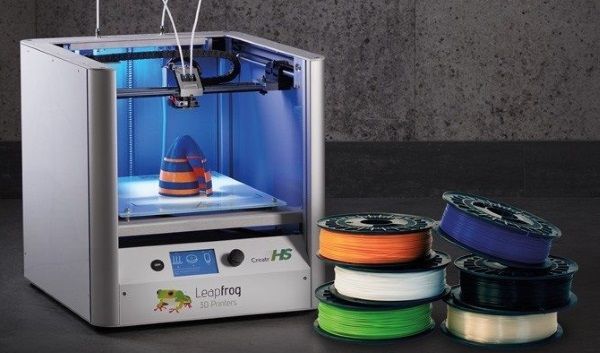 At least that's the BeeHex plan.
At least that's the BeeHex plan.
Chef 3D making pizza
BeeHex was founded by an engineer and entrepreneur named Rajan Contractor. Apparently, this is both a surname and an occupation: in 2016, the startup won a NASA grant in the amount of $125,000 to develop a Chef 3D 3D printer for printing pizza.
The guys really assembled the 3D printer, but it did not reach space. But there were many plans to equip amusement parks, shopping centers and even large chain pizzerias like Dominos and Pizza Hut with breakthrough gastronomic equipment. For this, the startup raised additional investments in the amount of one million dollars, but the chatlians did not appreciate it, and the project somehow quietly disappeared into oblivion, although the company itself continues to work and design food equipment.
Now Rajan has a new plan: since NASA has decided to settle on the moon, we need to think about nyams in advance. What to feed hungry sleepwalkers? Plastic, for example.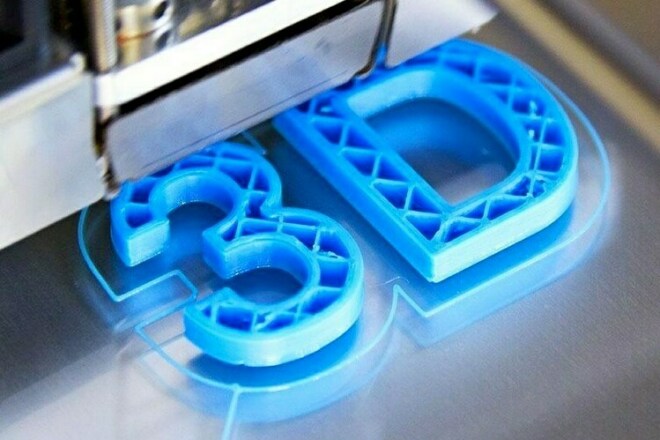 Of course, not plastic in a plastic form, but an edible mass obtained by processing biopolymers. So our polylactide sugar joke took an unexpected turn.
Of course, not plastic in a plastic form, but an edible mass obtained by processing biopolymers. So our polylactide sugar joke took an unexpected turn.
Pasta al dente as you like
The idea unveiled at the CES 2023 consumer electronics show is as follows: plastic waste is collected, ground in a shredder, and then sent to a bioreactor with special bacteria. Microorganisms eat plastic and - how to put it more appetizingly? - produce biomass. The resulting material can charge 3D printers and allegedly print whatever your stomach wants - even steaks or chicken fillet.
Apparently mindful of previous experience with NASA, Rajan also prepared a backup plan - to install containers with bioreactors and 3D printers in disaster areas. There is a certain logic here: what is usually enough after hurricanes and tsunamis is garbage thrown back onto land from the garbage heap called the oceans. Yes, and there is enough garbage on land, but not all plastic will be biorecyclable.